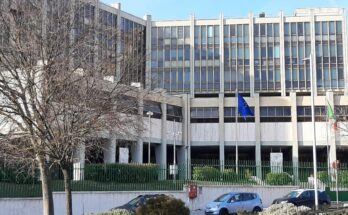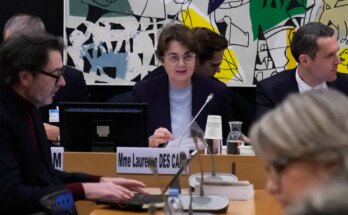The ambitious plan presented by the City of Madrid in 2019 to correct the economic and social inequality between the north and south of the capital is far from achieving its objective. Of the 457 million euros with which the government led by José Luis Martínez Almeida has irrigated the Sures program since 2019, only a scant 13% (59 million) has been allocated to alleviate the shortages suffered by the inhabitants of the nine neighborhoods that appear in the initiative. This is what the report reveals Madrid forgotten by Almeida of Más Madrid to which EL PAÍS had access, who concludes that the Consistory project “was nothing more than a compendium of actions” and that, although these operations were carried out in the southern and eastern districts of the city, they had “no positive effect on territorial rebalancing”. The party’s deputy spokesperson in the capital, Eduardo Rubiño, says that the Sures plan “is pure smoke, a curtain to continue perpetuating Madrid’s structural inequality.”
Analyzing the results of the plan against inequality, Más Madrid established three criteria that interventions must meet to be considered to truly facilitate the reduction of imbalances. The first requirement is that they are aimed at serving specific groups: vulnerable groups or groups at risk of exclusion. On the other hand, they must increase resources in a specific area, such as socio-educational, sporting or cultural. An example could be the increase in resources allocated to school strengthening. And, third, actions must improve or increase the provision of or access to public services through equipment other than routine maintenance or management actions. For example, build a library.
In the previous mandate – between 2019 and 2023 – of the 126 projects presented under the auspices of the Sures program, only 24 – 19% – met the three criteria established by Rita Maestre’s party to be deemed capable of reducing inequalities. In Moratalaz and Vicálvaro, for example, none of the six planned actions met the minimum requirements. Of the 24 measures aimed at reducing structural inequalities in the southern and eastern neighborhoods, 20 have been completed, one is being implemented, two are ongoing and one is being studied. As regards the category of actions considered rebalancing by Más Madrid, 44% of the budget was allocated to social promotion and community development strategies and 27% to economic and industrial recovery strategies.
From 2023 to August 2025, of the 66 projects proposed in the technical commissions, only 12 – 17% – met the report’s parameters Madrid forgotten by Almeida. In the districts of San Blas-Canillejas, Vicálvaro and Villaverde none of Sures’ interventions are aimed at correcting inequalities. Of just 12 rebalancing actions, none have been completed, two are running, seven are underway and three are under study. The budget allocated for rebalancing actions in this period, unlike the previous mandate, is dedicated 77% to economic and industrial recovery and 21% to social promotion and community development.
The report of Más Madrid also includes a list of proposals to add to the Sures plan. In the Latina neighborhood, the training suggests the creation of the Lucero Civic Square, which would mean allocating a 27,000 square meter plot of land to a “large multifunctional square with green areas, a market, sports spaces, cultural classrooms and an outdoor amphitheater for cinema and concerts”, as conceived in the winning project of the 2017 participatory budgets. Other recommended measures are the dismantling of the Scalextric in Puente de Vallecas and the reform of the Puerto Canfranc square, “currently a degraded site which was the subject of a participatory process for its restructuring and whose development has been paralyzed for years”. The document also proposes the construction of a cultural center in the Moscardó neighborhood (Usera).
The Sures program, states Más Madrid, “represents a change of focus in the rebalancing policies” that Manuela Carmen promoted during her mandate of the Development Strategy for the South and East of Madrid, conceived with “the intention of reducing the social, economic and environmental gap in the peripheral neighborhoods that make up the arc that runs between the A-2 and the A-5 of the city”. Rubiño adds that Almeida “abandoned” that road to replace it “for pure propaganda which did not serve to reduce even by one iota the social, economic and environmental gap” suffered by the neighborhoods of Carabanchel, Latina, Moratalaz, Puente de Vallecas, San Blas-Canillejas, Usera, Vicálvaro, Villa de Vallecas and Villaverde.
To “make visible the PP’s oblivion towards the neighborhoods of the south and east”, on Thursday Más Madrid will visit several places where this abandonment is “particularly palpable”, explains Eduardo Rubiño. From the Amposta neighborhood (in San Blas-Canillejas), to Puente de Vallecas, passing through the lack of health centers in Carabanchel, the deterioration of the industrial fabric in Villaverde or the secondary school of San Fermín “which arrives more than 10 years late”.



